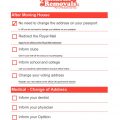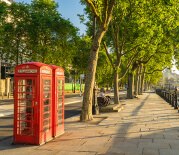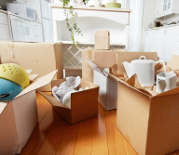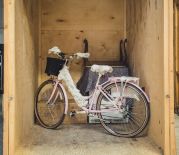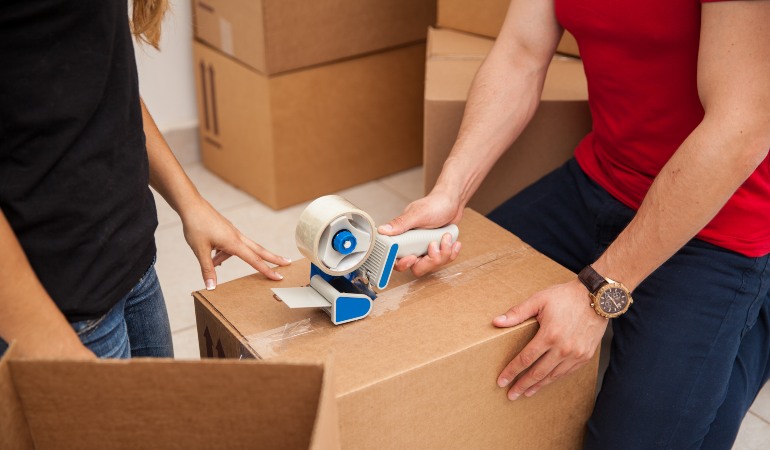
Moving house sounds exciting, but it never is an operation we look forward to because, very often, we don’t know where to begin. You have to contact utility companies, clean your entire home before you leave, hire a removal firm in advance, not to mention pack all your belongings.
So, how to pack up your house for relocation and make sure you don’t forget something in the process?
Table of Contents
Packing supplies you need
No matter how many boxes you have lying around the house, you will need various box types to accommodate all your belongings. You will also need to make sure that they are sturdy enough to weather the moving itself.
Many often overlook the fact that purchasing moving boxes and other packing materials are a necessary part of house relocation.
If you have any spare plastic boxes, you can pack your fragile and valuable items in them. Alternatively, provided you have the time to search for free moving boxes, there are plenty of ways to obtain them.
Remember that sometimes you might have to go during a specific time of the day to procure the best ones, as some grocery shops, for example, receive shipments only once a week. Generally, you’ll need:
- Small boxes
- Medium boxes
- Large boxes
- Heavy duty boxes
- Wardrobe boxes
- Mirror boxes/ Telescopic cardboard boxes
For safety reasons, it’s best to use telescopic cardboard boxes if you want to pack mirrors and artwork.
You can make wardrobe boxes yourself by using a tall enough box and adding a metal rail you can find on eBay in different lengths. Additionally, you’ll need:
- Packing tape
- Bubble wrap
- Styrofoam
- Old newspapers
- Stretch wrap for furniture
- Marker
- Plastic bags
- Labels
There are whole moving house kits online you can find for different types of properties. Another option is to book a packing service from a removal company.
Not only do they have different types of boxes suitable for all sorts of items, but they can also do all the packing professionally for you. Moreover, items packed by moving companies are usually insured against damage and loss.
How to pack for moving house
Begin packing well in advance
The average time it takes to pack all of your items depends mainly on their number. However, in most of our articles with packing tips, we state that you should start the process earlier than most people think. For a large house, two months should be enough if you pack one box daily.
For smaller homes, one month should be just fine. Of course, there is no exact number, but you get the idea.
Start with rooms and items you use less often
For instance, you can first tackle the rooms on the highest floor, especially if you have a loft, and then, little by little, move your way towards the bottom floors. Seasonal items you’re currently not using, such as garden tools, coats, and Christmas lights, are perfect examples of items you can pack before you handle everything else.
Sorting through already packed belongings makes it easier to set aside the boxes you’re taking with you and those which you would like to donate or give away.
Declutter and donate
Speaking of things you don’t want to take with you, hold a garage sale or give your old unwanted items to charity. There is also eBay, so your options are plenty. If you have friends helping you with your move, ask them whether they need anything you plan to sell.
After all, you’re not paying them, and they should get something for all their troubles. You can sweeten the deal with a pizza or drinks.
Make a detailed inventory list
These are extremely helpful if you have large collections of books, CDs, trinkets, etc. It’s okay if you write just “Books” on the labels of your moving boxes.
However, if you have a specialised literature collection, which is not kept in a single room, we recommend typing out detailed inventory lists. That way, you can upload the spreadsheets on your phone while you print out and stick copies to each box.
Pack one room at a time
This is one of the most important packing tips that often gets neglected. There is a debate about whether storing your items by room or by category is better. It really depends on what’s easier for you. Nevertheless, we recommend packing your belongings by room.
Doing this will help you stay organised and will later tell the movers or anyone unloading which box goes where.
Do not exceed the limit of 30 pounds per box
This is of high importance if you move abroad, as there will be many more moving boxes to pack for sure. You might get a back injury, or one of the boxes might not be able to withstand the weight when moving it. Pack light items in large boxes and heavy items in small boxes. This packing tip alone will save you a great deal of pain… literally.
Check also:
Use plastic bags for spillable items
When it comes to packing toiletries and detergents, it’s best to reduce the number of liquid items you wish to take by packing only essentials. Select a sturdy box and some plastic bags. Take the bottles and unscrew the caps.
Afterwards, place a plastic bag over the neck of each bottle and screw the caps back on. Ideally, you should be able to fit the whole bottle into the plastic bag. Tie/Zip the bag and secure it with scotch packing tape. That way, if your bottle opens accidentally, its contents will remain in the plastic bag.
Roll your clothes
Ask any frequent traveller what the best way to store their clothes is, and most of them will agree that rolling them is most practical. This is way easier than following any guide on how to fold your clothes properly.
Plus, rolling reduces the amount of space they take, and wrinkles are less likely to appear. So you can store more clothes in one box and not worry about ironing them before you put them back in your wardrobe.
Use roll tubes to pack cables and appliance wiring
We all know how annoying it is to get your earphones tangled in your pocket, right? To avoid the same from happening to all the wiring you have at your house, use toilet roll tubes to pack them individually. Afterwards, label them with a small sticky note and store them in a single box.
Store all of your valuables in one place
Needless to say, pack all of your valuable belongings in one place and make a detailed inventory list so that you won’t forget or lose something. Another option is to rent a safe deposit box at your bank of choice and place your valuables there for safekeeping.
Take all of your documents with you
These include birth certificates, passports, bank account statements, etc. If your documents can fit into one box, pack them in one of a suitable size and load it into your car.
If you run your own home business or have a private practice, you may need to consider the packing and business removal services of a professional removals company depending on your needs. Don’t forget that such services are usually insured.
Take advantage of our expert packing services!
Enter your postcode to view our rates and availability in your area.
For questions about the services we offer visit our main site or you can always call us at 020 3746 0584
Fill empty gaps
Remember when we said to start by storing items you use less often? Here is why: You can use clothes, old newspapers, styrofoam, packing paper, or just old rags to fill gaps in the boxes. They will fix your items in one spot for the ride or if you have decided to transport your belongings to a long-term storage facility.
Put heavier boxes on the bottom
Packing tips like this one might be common sense, but they’re still important to mention. By putting your heavy boxes underneath the lighter boxes, you ensure no breakable items will get crushed during the move. This comes of great use when packing books in boxes or when loading furniture in solid containers and inside vehicles.
Label your boxes
Write the name of the room of each box with a marker next to the inventory list. Write on the sides of the boxes and not on top, as this will make it easier to recognise them if they’re stacked. It’s also advisable to use a different colour for every room.
If you have children, ask them to help out and get creative. Kids love drawing and colouring, so what better way to reduce the stress of moving? This is just one method of helping your kids cope with the move.
Read More:
Tips on How to Label Moving Boxes Like a Pro
Dispose of hazardous materials
International removal companies would usually remind you that they will not allow the transportation of such materials. If they haven’t provided you with any information on the topic, you should certainly ask them. If they happen to handle hazardous items and you wish to transport such materials, ask about certifications and qualifications. Keep in mind this significantly increases the cost of your move.
Per the website of the Government of the UK, such articles are sorted according to their class, identifying the type of danger they pose and by packing group (PG), which points to their level of danger. The following are considered dangerous goods and are regulated by strict international laws:
- Gases
- Explosives
- Flammable solids
- Flammable liquids
- Oxidizers and organic peroxides
- Toxic and infectious substances
- Radioactive material
- Corrosive substances
- Miscellaneous dangerous substances
Put simply, these include household items, such as paint boxes, cleaning products containing bleach, pesticides, asbestos, batteries, fluorescent tubes, etc.
So, the best way to deal with hazardous materials is to dispose of them in an eco-friendly manner. Lots of companies have the equipment to do this for you. If you need to take such items with you, make sure you shut them close as tight as possible and place each type in a different box. It’s not a good idea to mix them together. Close the boxes well and label them.
Set aside items for your box of essentials
One of the most important moving tips you will ever come across. The box of essentials should contain items you will need right after your move is over. It’s important to consider any other outside factors that may affect what you pack into your essentials box.
Depending on weather conditions and the location of your new home, you might need to include more items than you think. For example, if you’re moving house during winter, you will have to pack extra duvets, scarves, hats, and gloves. For more information on what to include and how to do it properly scroll down.
Be mindful of your pets
If you have had pets for a while, you know how big changes can affect them. Some get very anxious, while others can become very lethargic. It depends on your pet. But there are ways you can accommodate their needs during the relocation process and reduce the overall stress levels.
One way to do this is to let your pet get acquainted with all the packing materials. For more detailed information, you can check out what advice the Fantastic Removals Team gives on how to move with dogs, as well as the most important rules when moving with cats.
Book a house removals service for a smooth relocation!
Enter your postcode to view our rates and availability in your area.
For questions about the services we offer visit our main site or you can always call us at 020 3746 0584
How to prepare a box of essentials
If we haven’t stressed it enough already, here is another reminder to start packing as early as possible. This way, your essentials box will be halfway full by the time the moving day comes. Leave some spare room so you can later add last-minute items.
Put this box last in the moving van, so you can later have easy access to it once you’re done relocating. Don’t forget to ask your house removals service supplier about a man and van insurance – for the safety of the rest of your moving boxes.
Here is a basic list of what your box of essentials should contain:
- Double purpose garments
- Set of office clothes (if necessary)
- Bedsheets and duvets
- Snacks, canned or boxed food
- Can opener
- Eating utensils
- Pans and pots
- Towels and dishcloth
- Toiletries
- First aid kit
- Baby supplies
- Pet food (if you have a pet)
- Instruction manuals for all your electric appliances remote controls
- Toolbox
Now that you know how to pack for moving home, we wish you happy packing and good luck!
Check also:


 (33 votes, 92.73 % )
(33 votes, 92.73 % )

